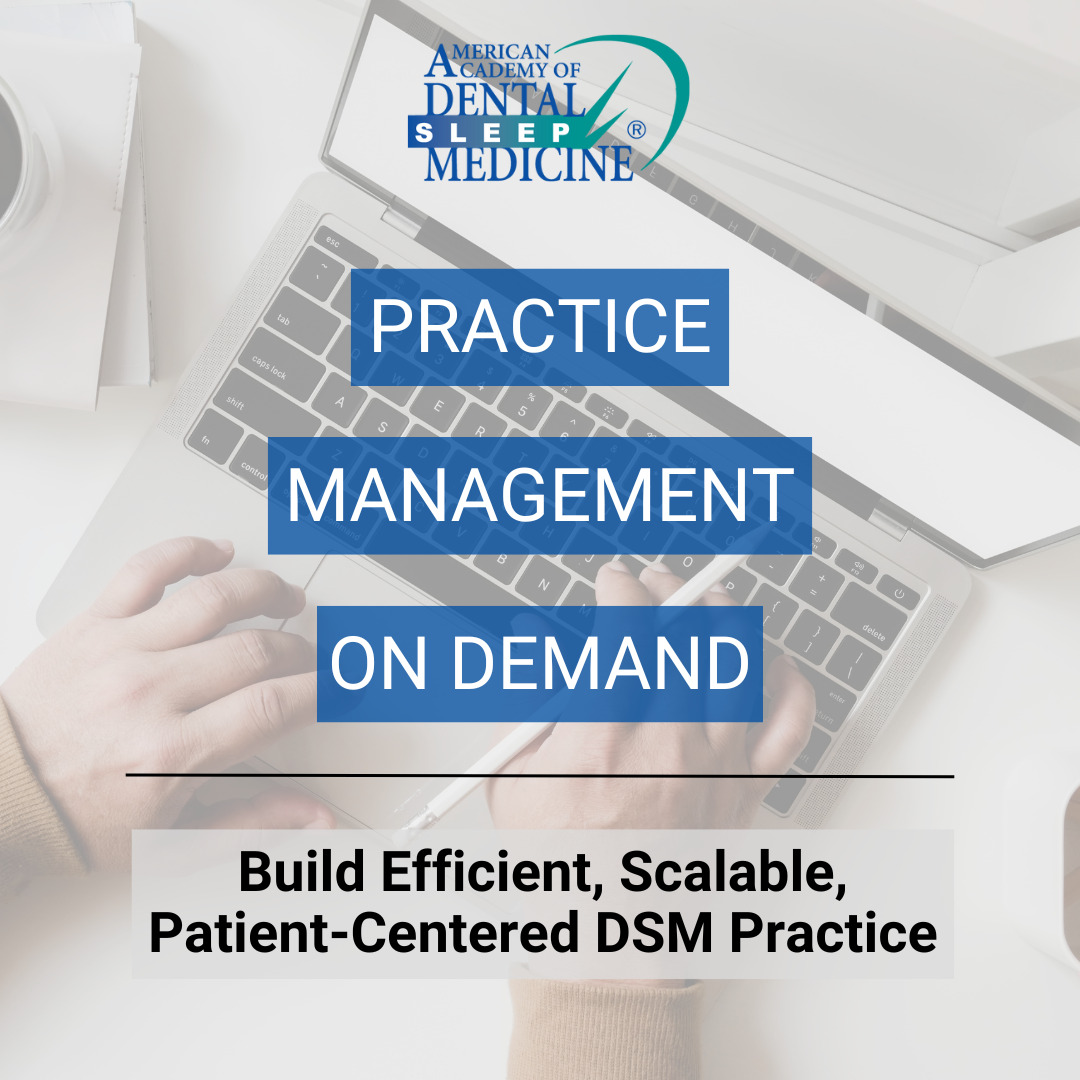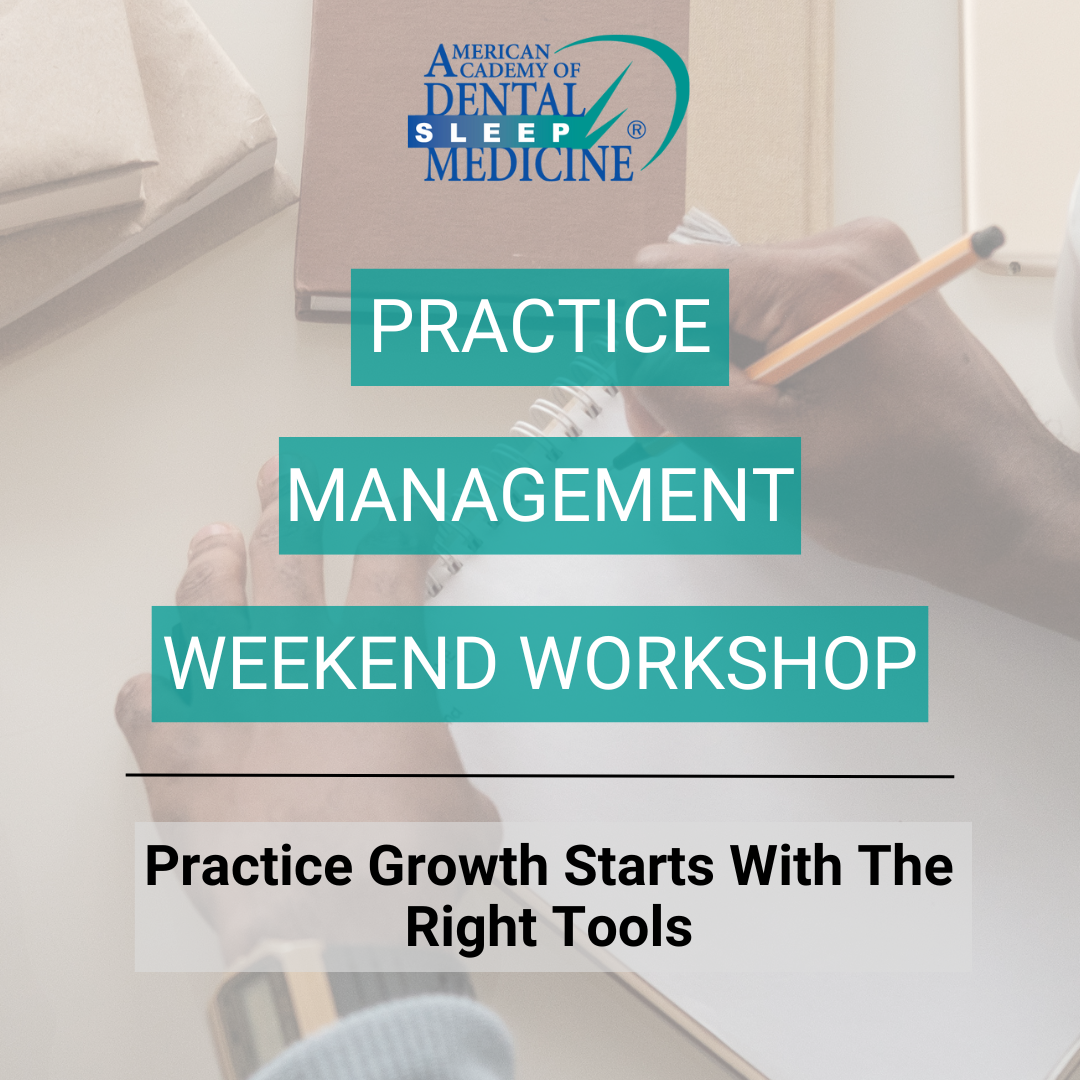Practice Management Program

Build a Stronger DSM Practice - Online or In-Person
Whether you are starting out or looking to optimize your existing practice, the AADSM Practice Management Program offers two comprehensive pathways to success.
Learn from top industry experts and start elevating your dental sleep medicine practice!
On Demand registrants save 25% on the Practice Management Weekend Workshop.
Register for Practice Management On Demand Register for Practice Management Weekend Workshop
Practice Management On Demand
A virtual program that provides a step-by-step approach to treating more sleep apnea patients and elevating your DSM practice.
Only $750 for members (14.5 CE)
Practice Management Weekend Workshop
November 15-16, 2025
An in-person workshop, focusing on communication, workflows, and practical tips to help you build a thriving and efficient DSM practice.
Only $1,000 for members (12 CE)
Questions? Contact info@aadsm.org.


